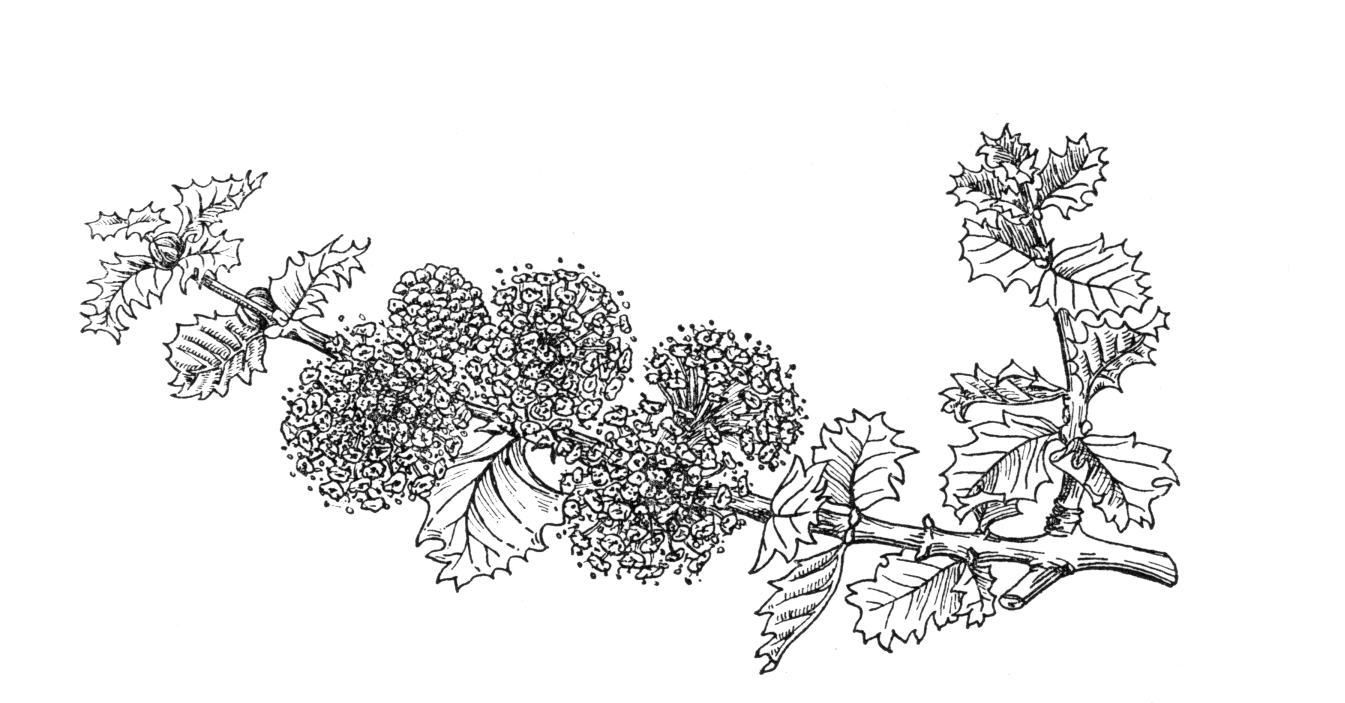Ceanothus purpureus
Credits
Article from Bean's Trees and Shrubs Hardy in the British Isles
Recommended citation
'Ceanothus purpureus' from the website Trees and Shrubs Online (treesandshrubsonline.
Genus
Synonyms
- C. jepsonii var. purpureus (Jeps.) Jeps.
Infraspecifics
Other taxa in genus
- Ceanothus americanus
- Ceanothus arboreus
- Ceanothus 'Burkwoodii'
- Ceanothus coeruleus
- Ceanothus crassifolius
- Ceanothus cuneatus
- Ceanothus cyaneus
- Ceanothus × delilianus
- Ceanothus dentatus
- Ceanothus fendleri
- Ceanothus foliosus
- Ceanothus gloriosus
- Ceanothus impressus
- Ceanothus incanus
- Ceanothus integerrimus
- Ceanothus megacarpus
- Ceanothus ovatus
- Ceanothus papillosus
- Ceanothus parryi
- Ceanothus parvifolius
- Ceanothus prostratus
- Ceanothus rigidus
- Ceanothus sanguineus
- Ceanothus sorediatus
- Ceanothus thyrsiflorus
- Ceanothus × veitchianus
- Ceanothus velutinus
An evergreen shrub 11⁄2 to 4 ft high, with rather stiff, reddish-brown stems. Leaves opposite, holly-like, pinnate-veined, broadly elliptic to rounded, 1⁄2 to 3⁄4 in. long, dark green and shining above, paler and thinly downy beneath; margins wavy, usually folded towards the upper surface of the leaf, set with spiny teeth. Flowers borne in April, deep blue or purple, in umbellate clusters. Bot. Mag., n.s., t. 37.
This beautiful species is confined as a wild plant to one small area in Napa county, California, where Jepson discovered it at the end of the last century. It is not completely hardy at Kew but the late William Dallimore grew it successfully in his garden at Bidborough, near Tunbridge Wells, Kent, and it was his plant that provided the material for the figure in the Botanical Magazine. It is not easily reproduced by cuttings but seed, which it produces in abundance, affords a ready means of increase. It should be given a sunny position in well-drained soil.
C divergens Parry
Synonyms
C. prostratus var. divergens (Parry) K. Brandegee

